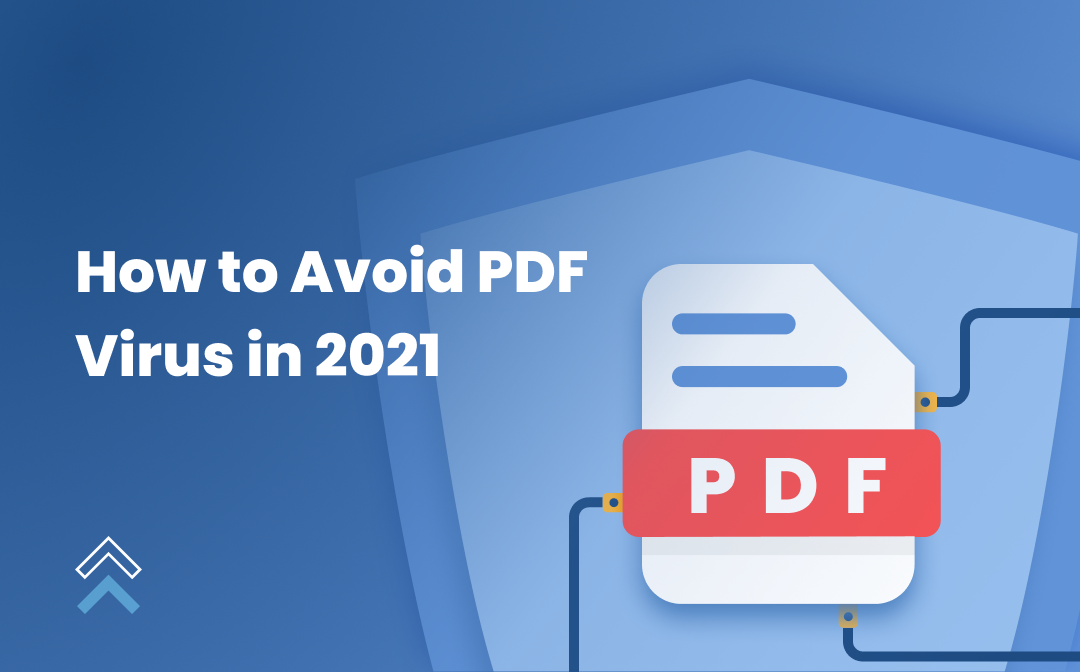After global events over the last 3 years or so, talk of viruses is probably the last thing anybody wants to hear about. You’ll be pleased to hear, however, that the viruses we’re talking about today are the kind that infect your electronic goods. Yes, we’re talking about computer viruses. Typically, when we want to free download some eBooks in PDF format on those online libraries and websites, we may wonder: can PDFs have viruses that will harm our computer?

For decades now, we’ve relied on technology for a whole host of different reasons, but it’s only for the last decade or so, that modern technology has really begun playing such an important role in everyday life. We use computers for work, we communicate with them, we do our banking on them, we do our shopping on them, and much more besides.
Computers are a mainstay in everyday life, but unfortunately there is always the risk of a computer virus. Viruses can infect all manner of electronic devices, and to make matters worse, you can pick up a computer virus from numerous sources.
In terms of PDFs, people often ask can you get a virus from a PDF, and that’s what we’re going to address today.
What are PDFs?
Firstly, we need to look at precisely what PDFs are before checking the answer for "can PDFs have viruses?".
PDF stands for Portable Document Format, and it was created back in 1993 by Adobe. Yes, that Adobe, the same company responsible for Photoshop, Illustrator, and much more on top.
Initially, PDF was created solely for sharing documents, but as technology advanced, so too did the many features PDF users could enjoy. Generally, PDFs contain text and/or images and graphics, though they can also contain more. PDFs enable users to execute any type of code on the device the PDF is being viewed upon.
The great thing about PDFs is that, if you use PDF software such as SwifDoo PDF, you can easily edit documents and files, share them, and enjoy countless other features. PDFs are also generally considered secure too.
When you question if you can get a virus from a PDF, it's better to know about what viruses are as well besides the PDFs.
What are Computer Viruses?
A computer virus is a code and a type of malware that embed dangerous code into other programs and perform actions to corrupt data while the programs are running. Computer viruses can replicate themselves, modify other computer programs, and spread among different hosts. Billions of dollars' economic losses have been caused due to computer viruses every year.
One type of computer viruses is macro viruses which are written in a programming language, macro language that many applications such as Microsoft Word and Excel allow to be embedded and ran in documents. So when we work with a file, the malware will start running and spreading.
Can PDFs Have Viruses?
PDFs can have viruses. A virus in a PDF file is actually a code hidden inside the elements of the file, which is executed to attach our device when we open or interact with the file.
PDF files may include static elements such as pictures and text as well as dynamic elements such as forms and electronic signatures. While all the content make our documents attractive and convincing, they can be exploited as vulnerabilities by hackers to attack the system.
Cyber attackers embed malware into hyperlinks, scripts, system commands, videos, or audios contained in PDF files, when you click on a link, execute these commands or open the videos in a PDF reader, the virus is interpreted and executed to infect your computer.
Therefore, despite PDFs being very secure compared with other types of files such as Word and Excel, they can still be infected with viruses if you aren’t careful, and here’s a look at how.
System commands
In PDF, launch action can open the command window which initiates commands to execute malware. The good news is that Adobe have disabled most of these system commands, though some do still exist.
JavaScript
In order to determine how a website looks and behaves, it is coded via JavaScript. Sadly, some cybercriminals have realized this and have used JavaScript to infect PDFs with malicious software.
Hidden objects
In PDFs, you may find hidden embedded and encrypted objects. These are so well hidden that the malware can actually hide from virus detection software without being detected. Once the infected PDF is opened by the user, these hidden objects can be executed.
Multimedia controls
Sometimes, PDFs may have infected hidden objects which are embedded in multimedia such as Quicktime Media or Flash Control. That means that if your PDF has any media embedded, once the media is opened and played, this can result in infection.
The importance of antivirus software
There are many examples of antivirus software out there, so finding a reliable and effective one is essential.
Many users now use virustotal.com where users can upload the PDF here, scan for viruses, and if necessary, clean the PDF up.
How to Avoid a PDF Virus
Having a reliable and secure PDF reader is also very important, which is why SwifDoo PDF is proving to be such a huge hit.
Using a secure PDF reader such as SwifDoo PDF is one way to help avoid PDF virus issues, but what else can be done?
Here are some tips on avoiding PDF viruses:
- Use a secure PDF reader from SwifDoo PDF
- Only open PDFs from trusted senders
- Scan PDFs before opening them
- Disable JavaScript on SwifDoo PDF or any other PDF reader
- Disable PDF reader from Windows start up programs
- Never open a PDF if it doesn’t feel or look right
- Regularly backup your systems
- Use a quality and reliable antivirus software










